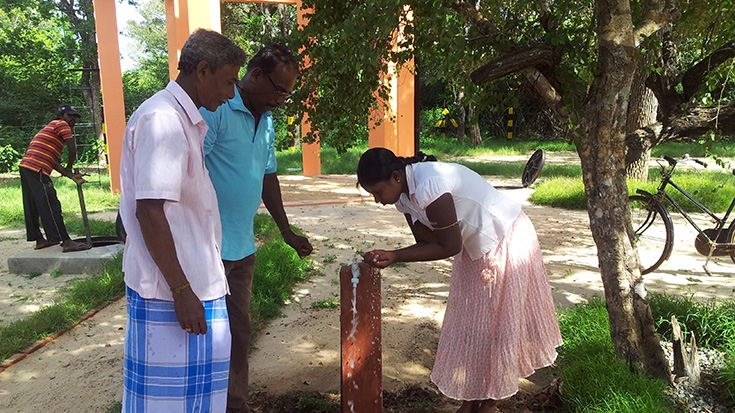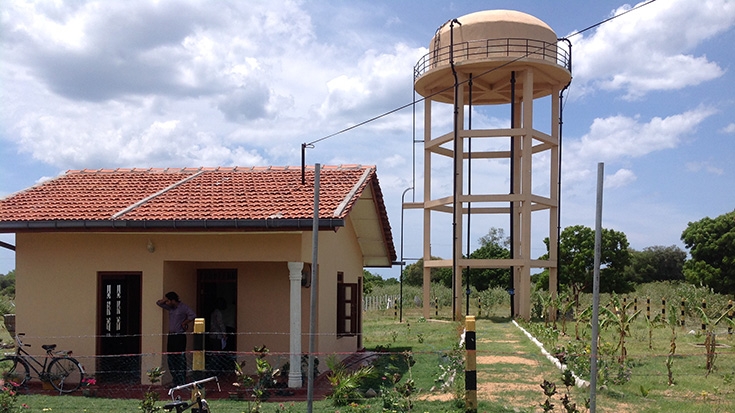To provide opportunities for residents and to improve access to water and sanitation, the North East Water, Sanitation, and Hygiene project (NEPWASH) project, supported by the Australian Government’s Department of Foreign Affairs and Trade (DFAT) is tackled these critical issues through building infrastructure to provide water for drinking and planting, as well as toilets to improve sanitation and convenience.
The project has provided water to at least 8,800 people and has the opportunity of reaching up to to 15,800 residents as more of them return back to their homes. 517 families have benefitted from a sanitation grant to construct their latrines.
“Community input, and involvement is critical to the success of the project. These rural water supply schemes are managed and maintained by the communities after construction, so adequate training for the community to take on the operation and maintenance of the scheme is also critical for long term operations and sustainability of their schemes,” said project leader Shideh Hadian.
Residents provided some labor to build the water infrastructure, organized themselves into Water User Associations (WUA) to make decisions, and benefited from hygiene education and awareness programs, which is at the heart of any water and sanitation program to succeed.”
“I got down to work. I carried cement, sand, bricks on my shoulders. I was determined. I wanted to work as a laborer and deliver on the expectations,” said Indika.
The project from the beginning of its planning realizes that simply building these facilities may not maximize their effectiveness. To provide local communities with greater voice and input in their decision making processes, WUAs were established to make decisions and advocates about the social, economic, and health benefits of safe drinking water and sanitation at their door.
The WUAs have also united residents of different ethnic and religious beliefs to work together to improve their communities. They also assist in hygiene promotion, information collection, and sanitation improvement, purchase of water meters and school sanitation programs, as well as obtaining voluntary donation of land. Women are well represented in the associations and priority are given to women headed households and those with disabilities.
“I did not have a toilet before. The Water User Association helped me, through incentive sanitation grant, to construct a toilet next to my home for the convenience of my children. I dream of having a tiled shower attached to the toilet,” said a resident in the village of Nilapola.
In addition to improving water and toilet access in schools, which has improved student comfort and health, students were educated in hygiene habits such as washing their hands before and after eating meals at school. Some parents are reporting that their children are following these habits at home and encouraging their parents to do the same which has resulted in improved reports by health workers.
“The experience of working together with communities during the design, execution, and follow up of the project has been a rewarding process and shown to be effective with the hope of expanding the project to include more residents and communities”, said the task team.
With confidence, Indika envisions a brighter future for her and her community. “I hope that present and future generations will receive the benefits from this project.”


